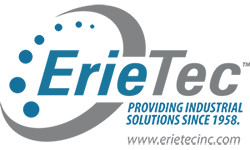When you work with ErieTec, you have a partner that is laser focused on your priorities. Often times, the highest priority is your bottom line. Can we get something to you at a cheaper price? We can! But we don’t just find the lowest number and ring you up – we ensure that we find that perfect intersection of good quality product and cost efficiency. When it comes to industrial belting, we know that poor quality ends up costing you in the long run. If your belt fails you 5 times more often, it doesn’t matter that it was half the price! You can rely on our experience, expertise, and motivation to provide you the right solution – we’re going to get you a quality product at a reasonable price.
Industry: Lumber
Location: Eastern PA
Cost Savings: $1,500 + extended life
Problem
The customer has a portable chipper that was in need of a replacement cleated belt. They were vey conscious of the investment as they need to keep their eye on the bottom line. The exact replacement for that belt came from an OEM and was very expensive. A lower cost alternative for this industrial belting would be preferred.
Solution
ErieTec Territory Account Manager did an onsite visit to gather the specs for the belt and pulley sizes: the first step to selecting a suitable replacement. Through our research we were able to identify several possibilities, but Nationwide Belting offers a Multi Cleat Belt which was moisture and oil resistant (MOR). Because of this, we felt that was the best option for longer product life. It would move the chipped bark as well – if not better! – than the OEM’s V-cleat belting.
Savings Calculation
The immediate product savings was approximately $1,500: our option was about half the cost of the OEM’s industrial belting they’d been using. This alone met the customer’s needs. In addition to the product savings they requested, we were able to increase the life of the belt, leading to reduced downtime, maintenance, and fewer replacement belts needed in the long run.
What they wanted: product cost savings
What we gave them: product cost savings, reduced downtime and maintenance, and fewer replacement belts in the long run.
